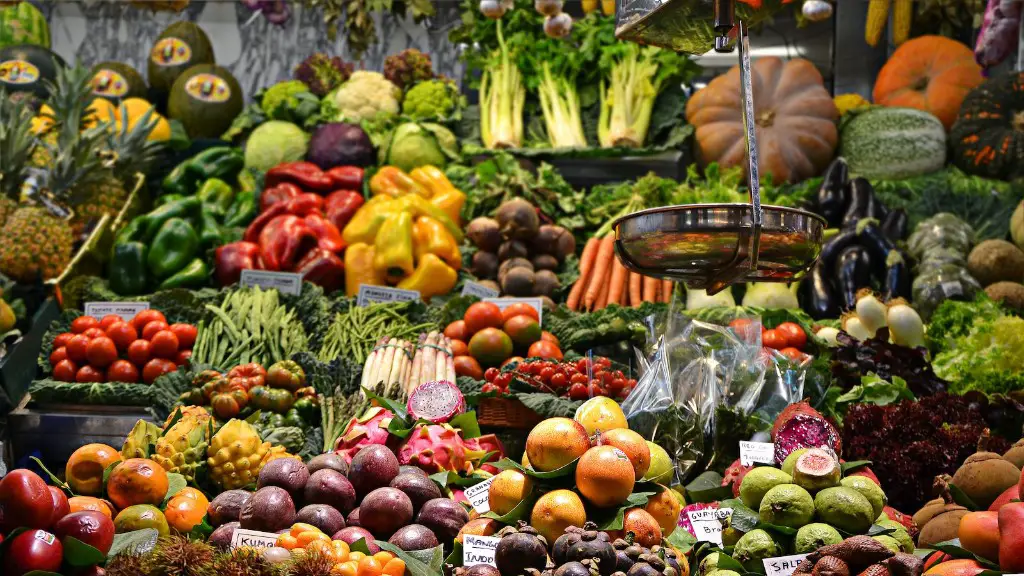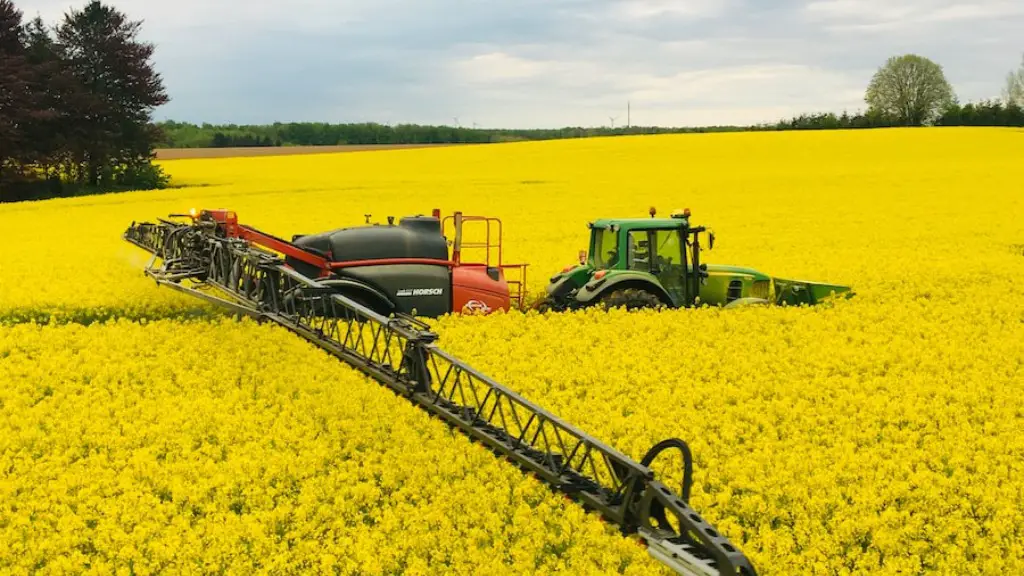Early agriculture began in a variety of places around the world, including the Fertile Crescent in the Middle East, China, and the Americas. Agriculture allowed for the domestication of plants and animals, which led to the development of civilizations. Agriculture allowed for the growth of cities and the rise of civilizations.
The origins of agriculture can be traced back to the various regions of the world where it is thought to have first emerged. One of the earliest known examples is in the Fertile Crescent of the Middle East, where evidence suggests that early farming practices were first developed around 10,000 BCE. Other regions where early agriculture is thought to have independently emerged include the Yangtze River Valley in China (around 9000 BCE), the highland regions of Papua New Guinea (around 8000 BCE), and the Sahel region of Africa (around 6000 BCE).
What is agriculture and where did it begin?
It is believed that agricultural communities began to develop approximately 10,000 years ago when humans began domesticating plants and animals. This transition from a nomadic hunter-gatherer lifestyle to a more settled way of life allowed for the development of communities and families. Domesticity provided a reliable source of food, which was essential for survival. Over time, this new way of life spread to other parts of the world, and the agricultural way of life became the norm.
The Neolithic Revolution was a huge turning point in human history. For the first time, humans began to domesticate plants and animals, which allowed them to settle down in one place and form civilizations. This led to many other advances, such as the development of writing and new technologies. The Neolithic Revolution was a key step in human evolution and paved the way for the modern world.
Where did agriculture begin in America
It is interesting to note that agriculture arose independently in at least three different regions of the world. South America, Mesoamerica, and eastern North America all had their own unique agricultural traditions that developed independently of each other. This just goes to show how adaptable humans are and how we can find ways to thrive in different environments.
A wide variety of plants and animals have been independently domesticated at different times and in numerous places. The first agriculture appears to have developed at the closing of the last Pleistocene glacial period, or Ice Age (about 11,700 years ago). Agriculture allowed for the domestication of plants and animals, which led to the development of civilizations. Agriculture allowed for the growth of cities and the rise of civilizations. Today, agriculture is a vital part of the global economy, providing food for billions of people around the world.
Who first started agriculture?
The Egyptians were one of the first peoples to practice agriculture on a large scale, starting in the pre-dynastic period from the end of the Paleolithic into the Neolithic, between around 10,000 BC and 4000 BC. This was made possible with the development of basin irrigation, which allowed them to grow crops in the otherwise arid climate of the Nile River Valley. The Egyptians used a variety of techniques to improve their agricultural productivity, including irrigation ditches, dams, and canals. They also developed a system of crop rotation, which helped to keep the soil fertile.
Agriculture is one of the most important inventions in human history. It allowed for the domestication of plants and animals, which led to the development of civilizations. Agriculture began during the Neolithic era, or the New Stone Age. There were eight Neolithic crops: emmer wheat, einkorn wheat, peas, lentils, bitter vetch, hulled barley, chickpeas, and flax. These crops allowed for the growth of cities and the rise of civilizations. Agriculture has had a profound impact on the world and continues to be a vital part of human society.
When and where did agriculture start quizlet?
The first agricultural revolution was a important turning point in human history. Agriculture allowed for the permanent settlement of humans and the domestication of plants and animals. This allowed for the growth of civilizations and the development of new technologies. The first agricultural revolution occurred in the Middle East around 10000 BC.
The history of agriculture is the story of humankind’s development and cultivation of processes for producing food, feed, fiber, fuel, and other goods by the systematic raising of plants and animals. Prior to the development of plant cultivation, human beings were hunters and gatherers. The development of agriculture allowed for the domestication of plants and animals, which led to the development of civilizations. Agriculture has played a significant role in human history, and continues to do so today.
Who first started agriculture in America
Native Americans were some of the first people to farm domesticated crops in the Eastern Woodlands, the Great Plains, and the American Southwest. These regions offered ideal conditions for farming, and Native Americans took advantage of this to cultivate a variety of crops. maize, beans, and squash were some of the most important crops cultivated by Native Americans. These crops provided them with essential nutrients and helped to sustain their communities.
The Tigris and the Euphrates regularly flood, which enriches the soil and makes it ideal for growing crops. This helped to spur the Neolithic Revolution, which began almost 12,000 years ago. The Neolithic Revolution was a time when humans began to domesticate plants and animals, and to settle in one place instead of hunting and gathering. This led to the development of civilizations.
What stage did agriculture start?
Agriculture began during the Neolithic Era, before polished stone tools were developed and the last ice age ended. Agriculture allowed humans to domesticated plants and animals, which led to the development of civilizations. Agriculture allowed for the growth of cities and the rise of empires. Today, agriculture is still an important part of the human experience, providing food, fuel, and fiber for people all over the world.
People may have started protecting plants from birds and animals so that they could grow and the seeds could ripen. In this way, people became farmers.
Did farming begin in Mesopotamia
The Tigris and Euphrates rivers are known for their floodwaters, which bring with them a mix of rich soil and tiny rocks, known as silt. This silt is highly fertile, making the land it settles on ideal for farming. The first farm settlements in Mesopotamia date back to around 7000 BC, where farmers grew wheat, barley, and other types of grain.
Iraq is home to the world’s first wheat, oats, barely and lentils, which were domesticated from wild plants about 10,000 years ago. The Tigris and Euphrates Rivers were the birthplace of agriculture, and the people who settled there learned how to cultivate plants and animals. Today, agriculture is still a major part of Iraq’s economy, and the country is one of the world’s leading producers of wheat, barley, rice and fruits.
Did Mesopotamia use agriculture?
A key question in debates about early Mesopotamian agriculture is what role, if any, irrigation played in agricultural production. On the one hand, it has been argued that irrigation allowed for the intensification of agriculture and the growth of cities and states by enabling farmers to produce more food than they could otherwise. On the other hand, it has been argued that irrigation was not necessary for early Mesopotamian agriculture and that it was only adopted later on, when other factors such as population growth and the rise of states made it necessary.
However, a new study has suggested that this may not be the case – and that early farming may have actually been less efficient than hunting and gathering.
Final Words
The origins of agriculture can be traced back to at least 10,000 BCE with the domestication of plants and animals in the Fertile Crescent region. Agriculture allowed for the domestication of plants and animals, which led to the development of civilizations. Agriculture also allowed for the growth of cities and the rise of complex societies.
There are many theories about where early agriculture began, but the most likely place is in the Fertile Crescent of the Middle East. This is where the first evidence of irrigated agriculture appears, along with early domesticated plants and animals. The Fertile Crescent was a naturally fertile area with ample rainfall and ample sunlight. It supported a large population, and early farmers may have chosen to settle there because of these favorable conditions.




